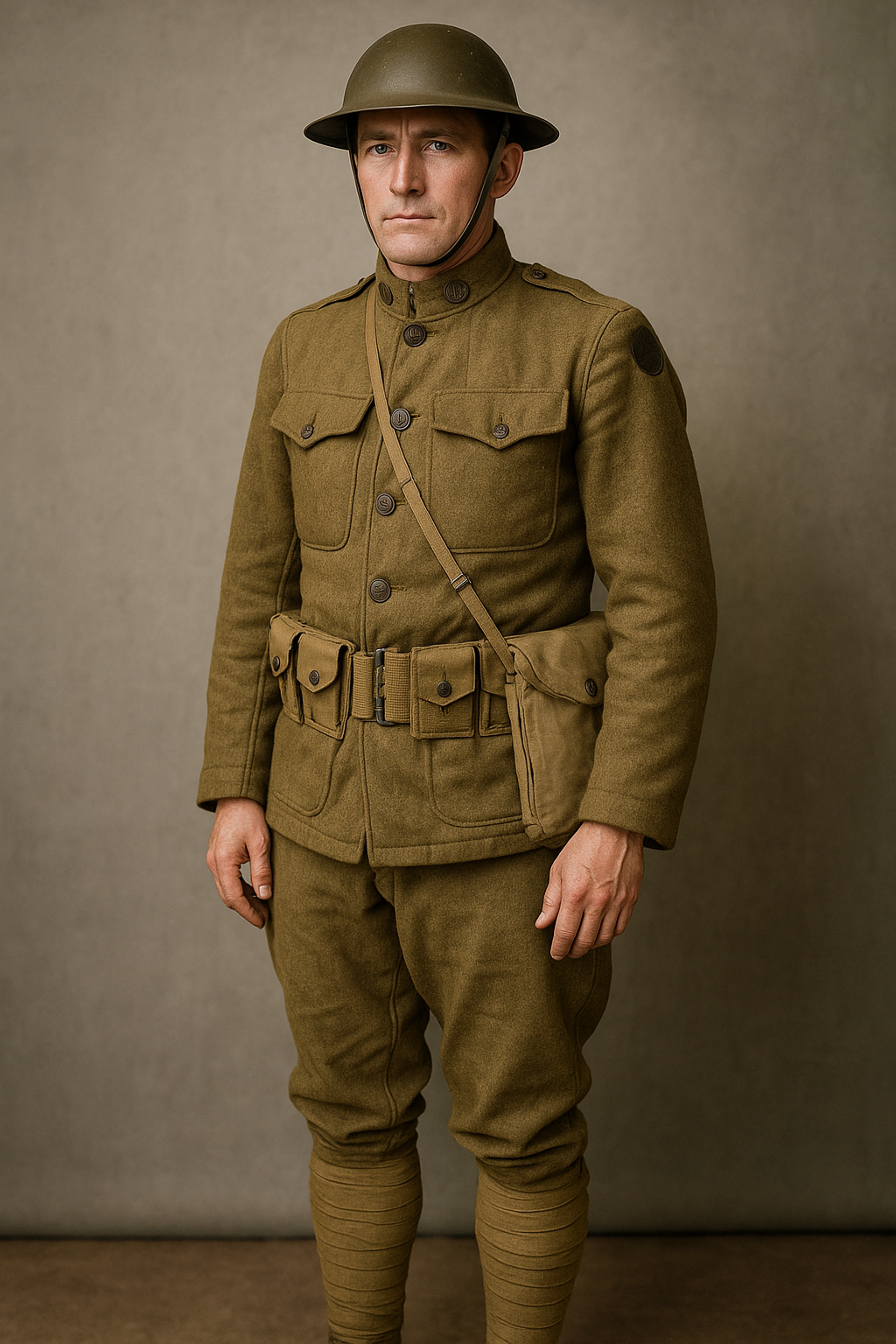
United States Army Uniforms WW1: A Deep Dive into Gear, Helmets & Insignia
Published on Sep 20, 2025
Introduction:
Did you know that over 4 million Americans served in World War I, and every soldier wore a uniform that told a unique story of duty, design, and transformation?
For collectors, historians, and reenactors, the WW1 United States uniforms represent more than just fabric—they’re living artifacts that shaped the American military identity. Whether you're looking to understand the differences between early and late war designs, searching for buying tips, or trying to connect the dots between WW1 American uniforms and World War II American uniforms, this guide has you covered.
In this article, we’ll explore the evolution, significance, and where to buy and collect United States Army uniforms WW1. Expect a mix of actionable advice, interesting facts, and commercial insights designed for both newcomers and seasoned enthusiasts.
H2: Understanding the History of WW1 United States Uniforms
Key Components of the WW1 American Uniform:
- M1910 Field Uniform: Olive drab wool tunic and breeches
- Puttees: Wool or canvas wraps around the lower legs
- Campaign Hat: Wide-brimmed felt hat, later replaced by the steel helmet
- M1917 Helmet: Modeled after the British Brodie helmet
- Insignias: Division patches, rank badges, and collar insignia
Historical Context:
- Uniforms were inspired by European designs but adapted for American conditions.
- Rapid mobilization led to inconsistencies in materials and manufacturing.
- Uniform changes during the war reflected lessons learned on the battlefield.
Example: Soldiers initially wore soft campaign hats, but trench warfare led to the introduction of steel helmets like the M1917 for better protection.
H2: Why Collect WW1 United States Uniforms Today? (Intents: Informational 50%, Commercial 50%)
Collectors and enthusiasts are increasingly investing in WW1 United States uniforms, not only for historical value but also as rare artifacts of craftsmanship and national heritage.
Top Reasons to Collect:
- Authenticity: Each piece tells a real story from the Great War.
- Appreciation in Value: Rare uniforms and accessories can increase in worth.
- Reenactments & Displays: Bring history to life in museums, schools, and events.
H2: Actionable Steps to Start Your WW1 United States Uniform Collection
1. Educate Yourself First
- Read books like "Uniforms of the United States Army, 1774–1979".
- Watch YouTube channels dedicated to military collecting.
- Join forums and Facebook groups like “WW1 & WW2 Military Collectors.”
2. Know What You’re Looking For
- Determine if you want originals, restorations, or replicas.
- Start with common items like:
- M1917 helmet
- Wool service coat
- Breeches and puttees
- M1910 haversack
3. Buy from Trusted Sources
- Trusted Dealers: IMA-USA, Hessen Antique, At the Front
- Auctions: eBay, GunBroker (verify authenticity!)
- Local Shows: Military shows often offer hands-on inspections
H2: Common Pitfalls to Avoid When Collecting WW1 American Uniforms
1. Misidentifying WW1 vs WW2 Pieces
- WW1 uniforms typically use darker olive drab (OD 33) than WWII (OD 7).
- Avoid confusing M1941 field jackets with M1910 tunics.
2. Falling for Fakes
- Beware of modern reproductions being passed as originals.
- Watch out for:
- Incorrect stitching patterns
- Non-period buttons or zippers
- Labels that look aged but use modern fonts
3. Ignoring Condition
- Moth holes, sweat stains, or dry rot can destroy value.
- Minor repairs are okay if disclosed, but hidden damage is a red flag.
H2: Trends in WW1 United States Uniform Collecting (Intents: Informational 50%, Commercial 50%)
1. Reproduction Quality is Rising
Modern manufacturers are now creating museum-grade replicas of WW1 American uniforms, making it easier for reenactors to wear history without risking damage to originals.
2. Growing Reenactment Communities
Reenactment events are booming across the U.S. and Europe. These communities are excellent entry points for learning more and showcasing your gear.
3. Crossover Interest in WWII Collecting
Many WWII collectors start exploring WW1 because of the visible evolution between WW1 United States uniforms and World War II American uniforms. This trend is pushing demand (and prices) upward for authentic gear.
H2: Where to Buy WW1 United States Uniforms (and What to Look For)
Top Online Marketplaces:
- IMA-USA.com: Known for genuine militaria and museum-quality replicas
- HessenAntique.com: Excellent for reenactors and new collectors
- eBay: Widest selection, but caution required
What to Look For:
- Period-authentic materials (wool, brass, cotton)
- Correct insignia placement
- Military contract stamps or quartermaster tags
Pro Tip: Use a black light to check fabric authenticity—modern threads often glow!
H2: How WW1 American Uniforms Influenced World War II American Uniforms
While the wars were decades apart, the lessons from the trenches of WW1 deeply impacted the design of World War II American uniforms.
Notable Evolutions:
- Transition from breeches to full-length trousers
- Introduction of field jackets (like M1941) for better mobility
- Improvement in helmet design (M1 vs M1917)
Understanding this connection deepens appreciation for both eras and expands collecting possibilities.
Conclusion: Step Into the Past With Confidence (Intents: Informational 50%, Commercial 50%)
Whether you’re just starting or expanding a collection, diving into the world of WW1 United States uniforms offers a deeply rewarding journey through time. From identifying authentic pieces to understanding how these garments influenced World War II American uniforms, this is a field rich with stories, lessons, and opportunities.
